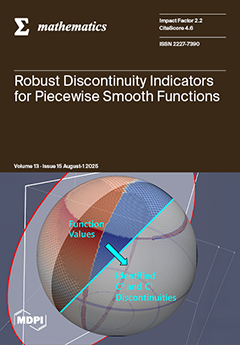Open AccessArticle
Neural Network-Based Predictive Control of COVID-19 Transmission Dynamics to Support Institutional Decision-Making
by
Cristina-Maria Stăncioi, Iulia Adina Ștefan, Violeta Briciu, Vlad Mureșan, Iulia Clitan, Mihail Abrudean, Mihaela-Ligia Ungureșan, Radu Miron, Ecaterina Stativă, Michaela Nanu, Adriana Topan and Ioana Nanu
Viewed by 498
Abstract
The COVID-19 pandemic was a profoundly influential global occurrence in recent history, impacting daily life, economics, and healthcare systems for an extended period. The abundance of data has been essential in creating models to simulate and forecast the dissemination of infectious illnesses, aiding
[...] Read more.
The COVID-19 pandemic was a profoundly influential global occurrence in recent history, impacting daily life, economics, and healthcare systems for an extended period. The abundance of data has been essential in creating models to simulate and forecast the dissemination of infectious illnesses, aiding governments and health organizations in making educated decisions. This research primarily focuses on designing a control technique that incorporates the five most important inputs that impact the spread of COVID-19 on the Romanian territory. Quantitative analysis and data filtering are two crucial aspects to consider when developing a mathematical model. In this study the transfer function principle was used as the most accurate method for modeling the system, based on its superior fit demonstrated in a previous study. For the control strategy, a PI (Proportional-Integral) controller was designed to meet the requirements of the intended behavior. Finally, it is showed that for such complex models, the chosen control strategy, combined with fine tuning, led to very accurate results.
Full article
►▼
Show Figures





